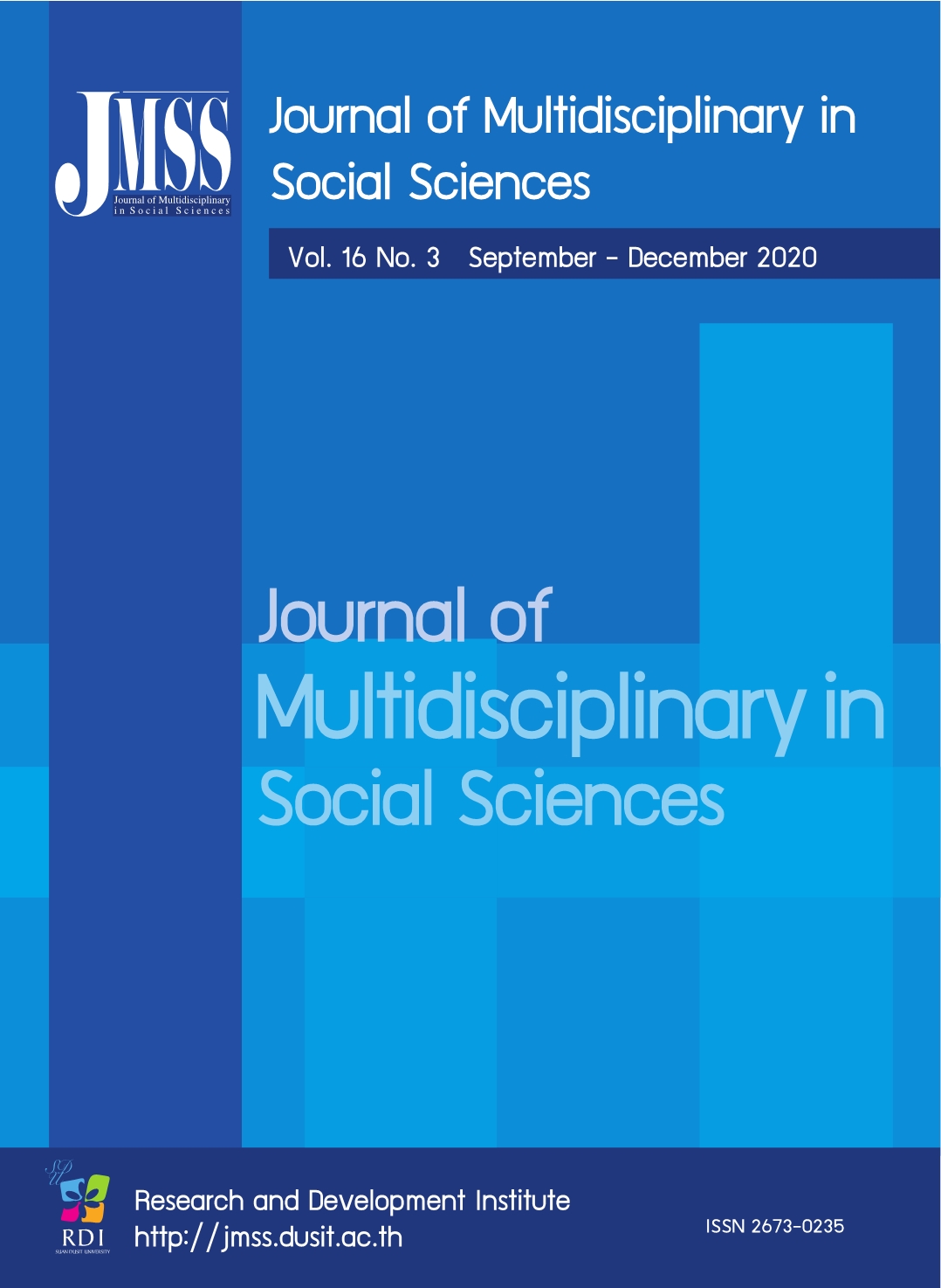Exclusive Memorable Experiences of International Cruisers at Thailand’s Ports of Call
Keywords:
Cruise tourism in Thailand, Exclusive memorable experiences model (Ex-Me-Exs)Abstract
This study investigated key factors contributing exclusive memorable experiences among international cruisers who disembarked from foreign cruise ships at three ports of call in Thailand: Laem Chabang, Phuket Island and Samui Island. Questionnaires were distributed on site to 1,216 international cruisers from November 2015 to January 2016. The data was analyzed in two phases to propose exclusive memorable experiences model (Ex-Me-Exs). The first phase aimed to verify factors and to reduce the number of indicators in questionnaire items by using exploratory factor analysis (EFA). The second phase was conducted by using confirmatory factor analysis (CFA) to ascertain that the proposed exclusive memorable experiences model (Ex-Me-Exs) was well-fitted with the data. The Ex-Me-Exs Model consists of ten key factors influencing international cruisers’ exclusive memorable experiences. They include (1) conspicuousness, (2) prestige, (3) quality, (4) learning, (5) meaningfulness, (6) involvement, (7) refreshment, (8) interaction, (9) novelty, and (10) hedonism. This study yields implications in two layers. The first is for academic purposes. Since studies on cruise tourism in Thailand are underexplored, this study helps bridge the literature gap. The second is for national tourism development reasons. Due to the rapid growth of cruise tourism in Thailand, the Thai government and stakeholders can use the findings from this study as a guideline to develop ports of call countrywide to serve an escalating number of international cruisers.
References
Asia Cruise Trends (2014). The SAGE International Encyclopedia of TRAVEL and TOURISM. Retrieved June 15, 2019, from https://www.cruising.org/docs/default-source/research/asiacruisetrends_2014_finalreport-4.pdf.
Cochran, W. G. (1953). Sampling techniques. New York: John Wiley & Sons. Inc.
Croce, E., & Perri, G. (2010). Food and wine tourism. UK: Cabi Tourism Texts.
Cruise Line International Association: CLIA. (2014). Contribution of cruise tourism to the economies of Europe. Seatrade: Cruise Review.
Florida- Caribbean Cruise Association. (2012). Cruise Industry Overview- 2012. State of the Cruise Industry. Retrieved April 5, 2018, from http://www.f-cca.com/downloads/2012-Cruise-Industry-Overview-statistics.pdf
George, P. G., & George, P. G. (2004). Past Visits and the intention to revisit a destination: place attachment as the mediator and novelty seeking as the moderator. The Journal of Tourism Studies, 15(2), 37-50.
Greenwood, B. A., & Barron, O. E. (2005). Issues determining the development of cruise itineraries: A focus on the luxury market. Melbourne, Australia: Council of Australian University Tourism and Hospitality Educators.
Gui, L., & Russo, A. P. (2011). Cruise ports: a strategic nexus between regions and global lines-evidence from the Mediterranean. Maritime Policy & Management, 38(2), 129-150.
Hooper, D., Coughlan, J., & Mullen, M. (2008). Structural equation modelling: Guidelines for determining model fit. The Electronic Journal of Business Research Methods, 6(1), 53-60.
Kaiser, H. F. (1958). The varimax criterion for analytic rotation in factor analysis. Psychometrika, 23(3), 187-200.
Kim, J-H., Ritchie, J. R. B., & McCormick, B. (2012). Development of a scale to measure Memorable Tourism Experiences. Journal of Travel Research, 51(12), 12-25.
Kim, J.-H., Ritchie, J. R. B., & Vincent, V. W. S. (2010). The effect of memorable experience on behavioral intentions in tourism: A Structural Equation Modeling Approach. Tourism Analysis, 15(6), 637-648.
Kline, R., B. (2005). Principles and Practice of Structural Equation Modeling. Retrieved April 10, 2018, from https://www.cscu.cornell.edu/news/Handouts/SEM_fit.pdf?fbclid=IwAR2PgY_nuKS0S3l3QAUUbZkTiVtEpNM2e09k9J1ga0Y3QoAyUGP1u8WtXVQ
Pine, B. J., & Gilmore, J. H. (1999). The experience economy: Work is theatre and every business a stage. Boston: Harvard Business School Press.
Sun, X., Jiao, Y., & Tian, P. (2011). Marketing research and revenue optimization for the cruise industry: A concise review. International Journal of Hospitality Management, 30(3), 746-755.
Swinyard, W. R. (1993). The effects of mood, involvement, and quality of store experience on shopping intentions. Journal of consumer research, 20(2), 271-280.
Thangthong, N. (2011). Expenditure behaviors of cruise passengers in Thailand: A case study of Princess Cruise Line (Master’s thesis). Pathum Thani: Rangsit University.
Thangthong, N. (2016). Luxury experience of cruisers in Phuket Port of Call. CAUTHE 2016: Conferences Handbook and Book of Abstracts. Council for Australian Tourism and Hospitality Education – CAUTHE.
Thangthong, N. (2017). Tourist behaviors of cruise passengers at Samui Island Port of Call. In Proceedings of the 2nd National Research Conference. (570-580). Ubon Rachathani: Rachathani University.
Thangthong, N., Inmoonnoi, K., & Khuanmuang, C. (2019). Travelling behaviors of international cruise passengers in Thailand. In Proceedings of the RSU International Research Conference. (1210-1216). Rangsit University
Uysal, M., Perdue, R. & Sirgy, M. J. (2012). Handbook of tourism and quality-of-life research: Enhancing the lives of tourists and residents of host communities. Springer Science & Business Media.
Downloads
Published
How to Cite
Issue
Section
License

This work is licensed under a Creative Commons Attribution-NonCommercial-NoDerivatives 4.0 International License.








